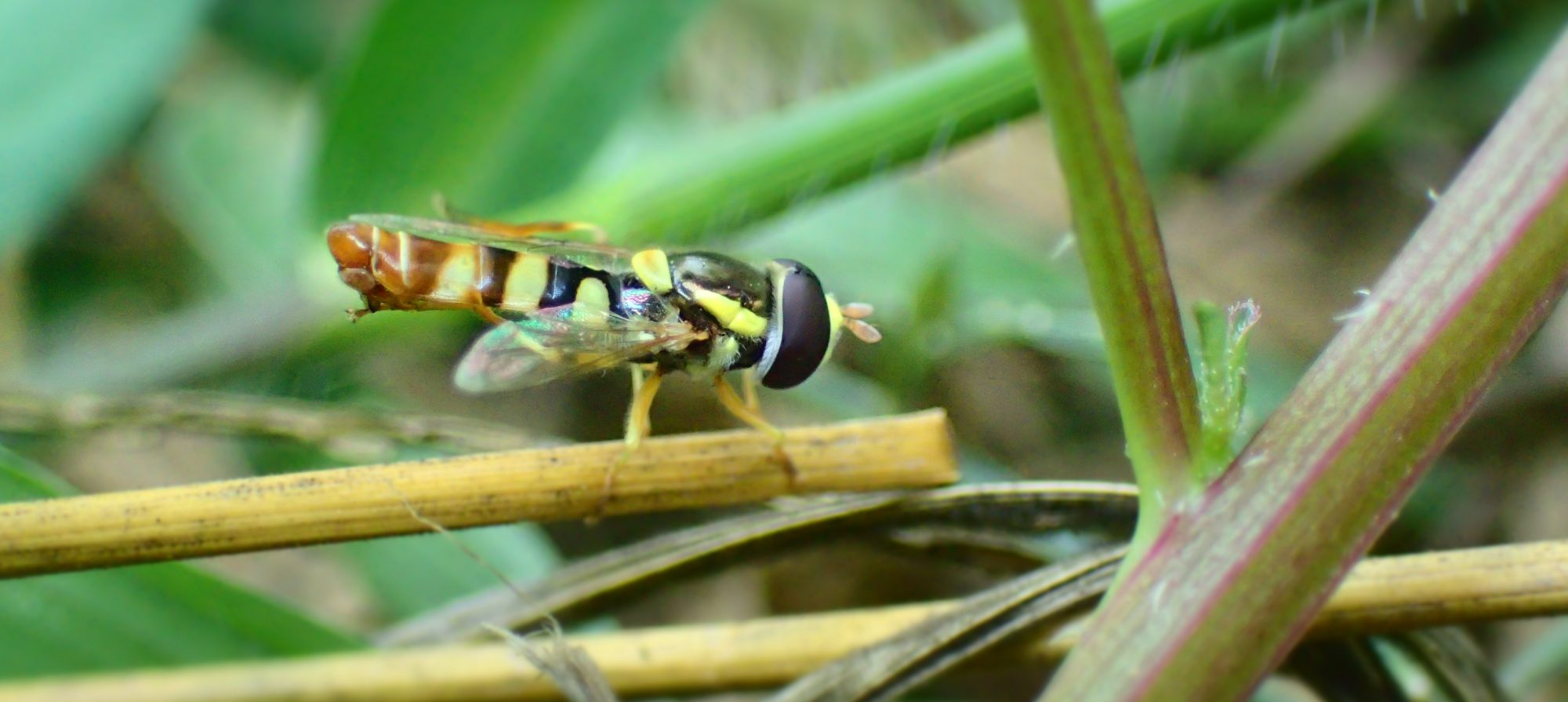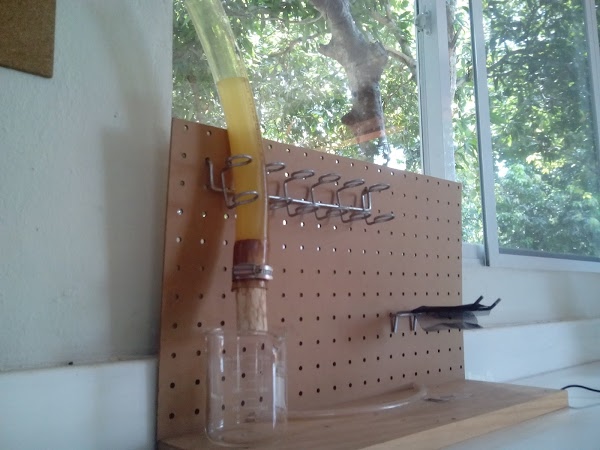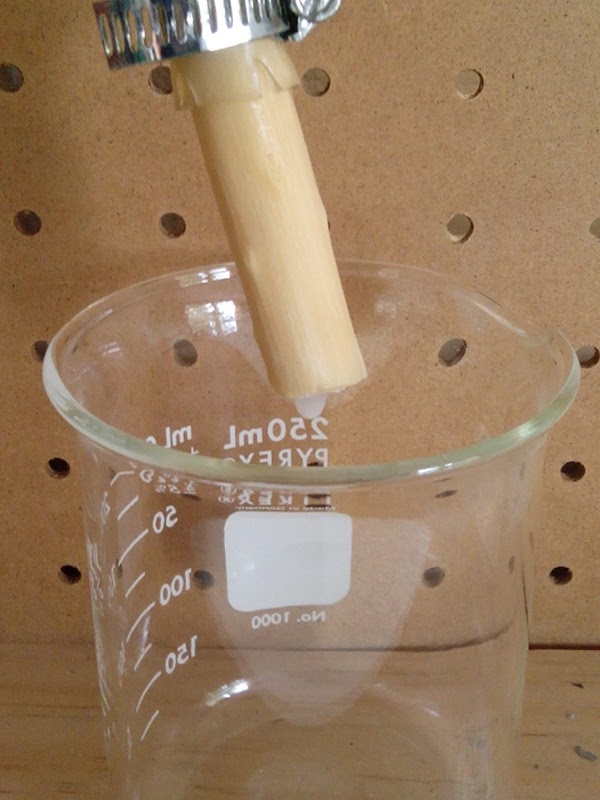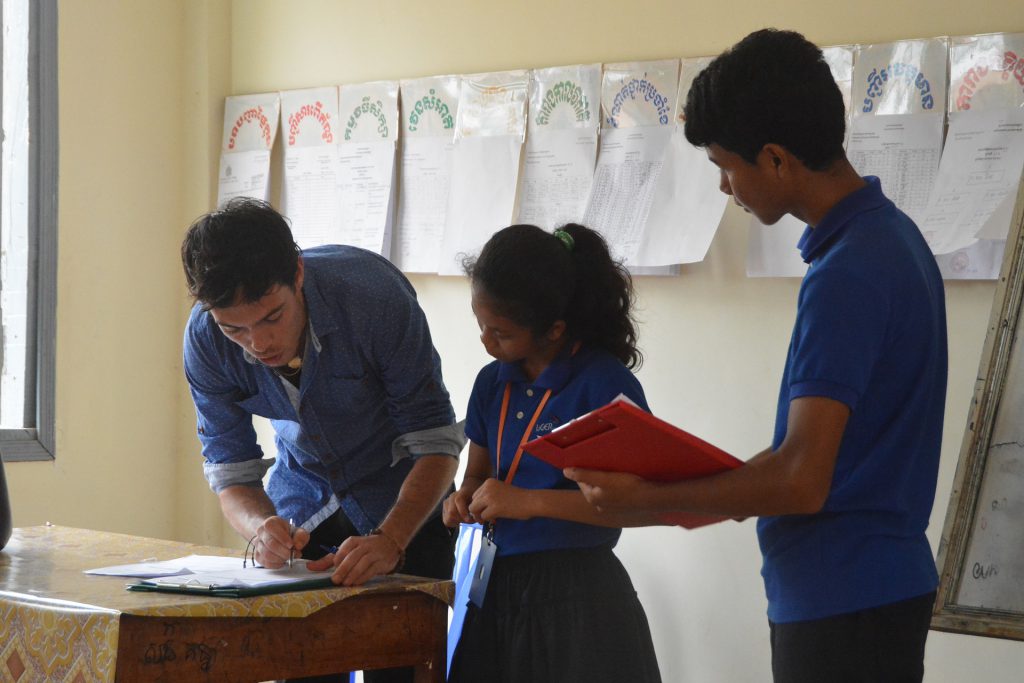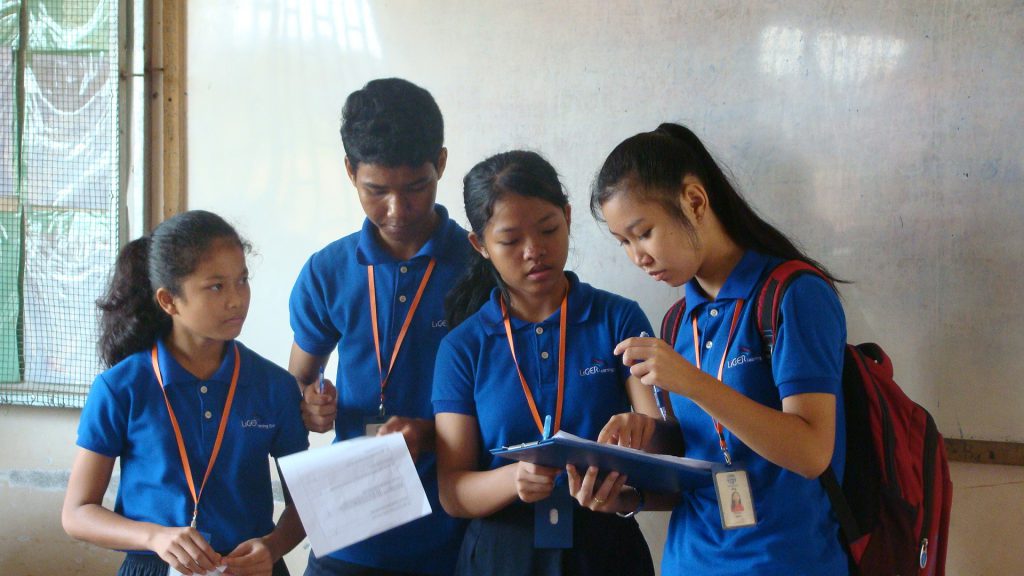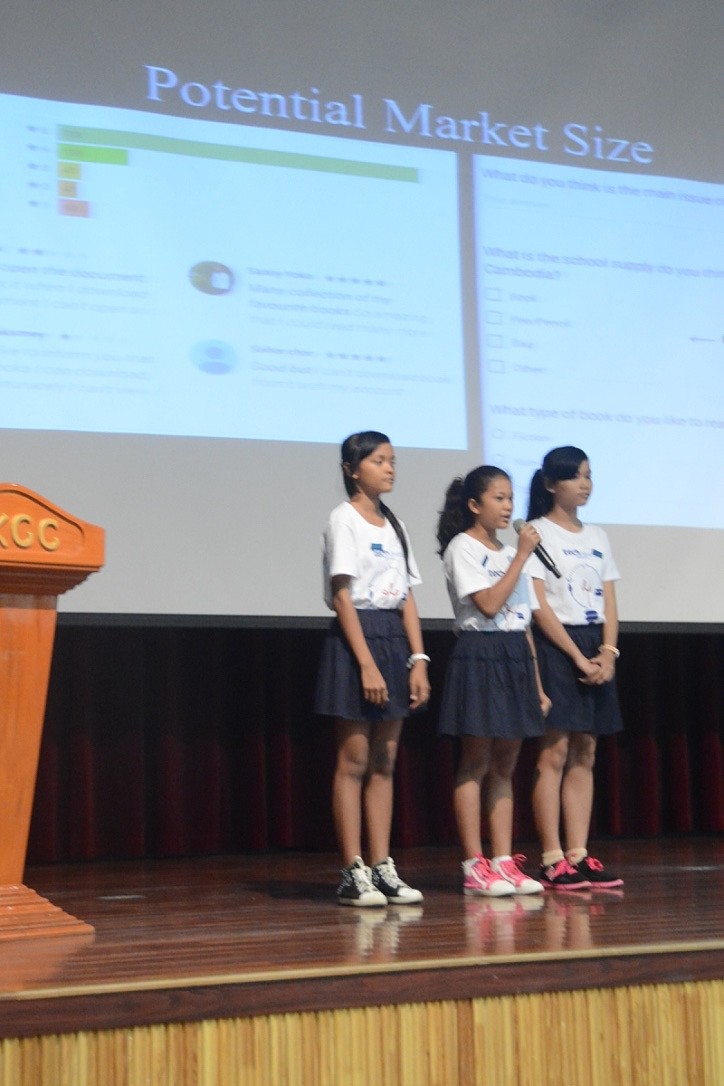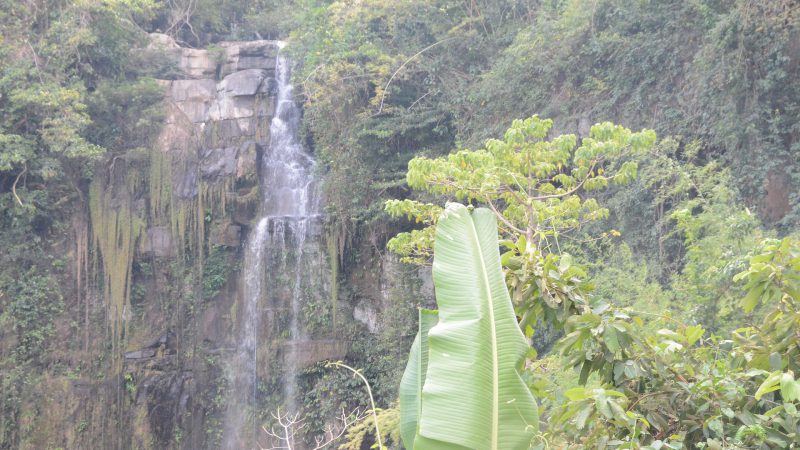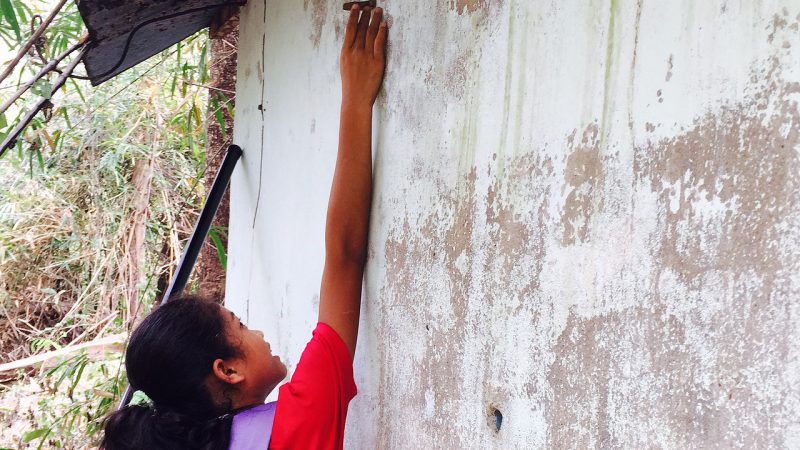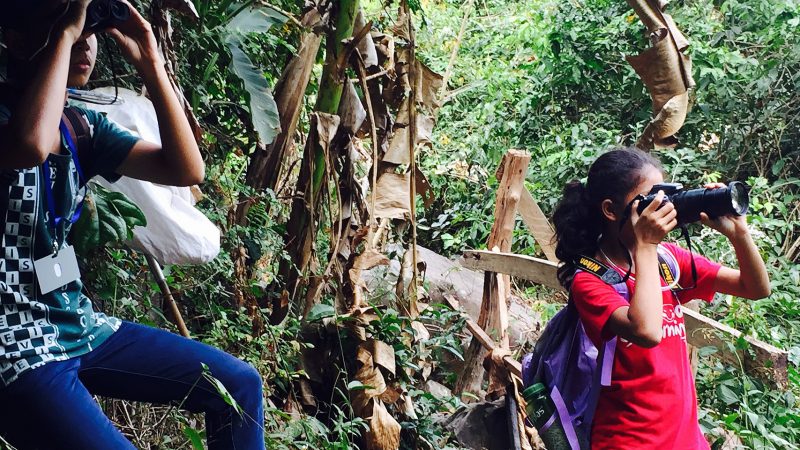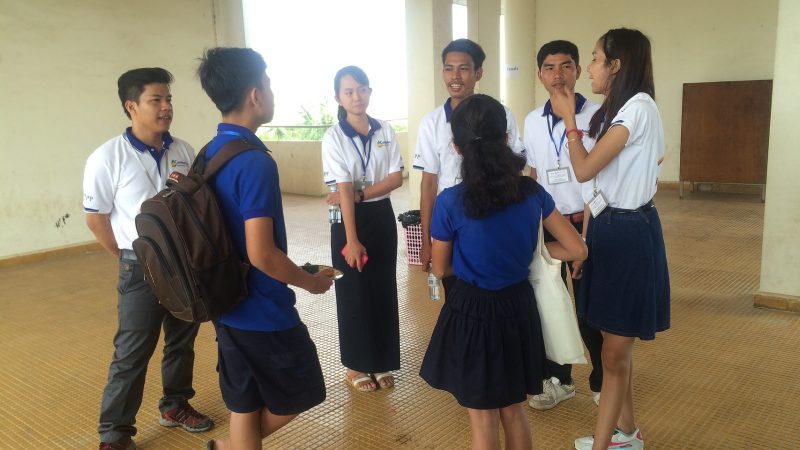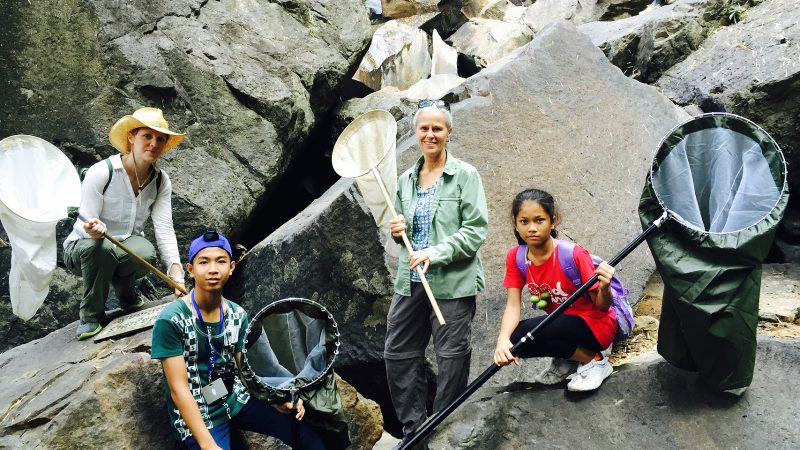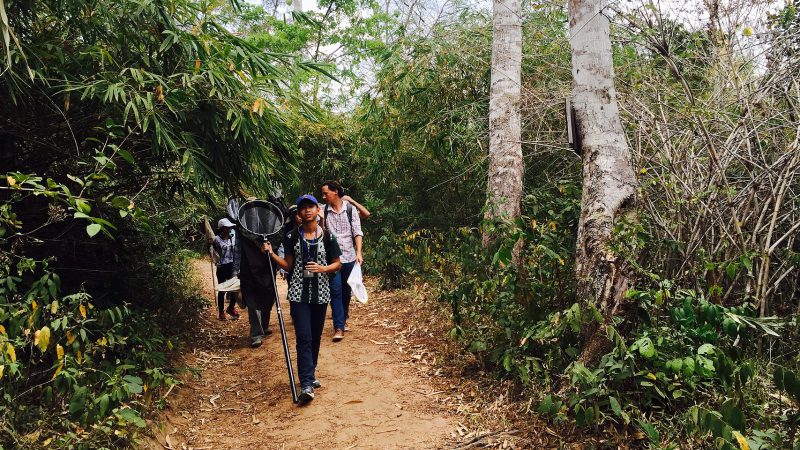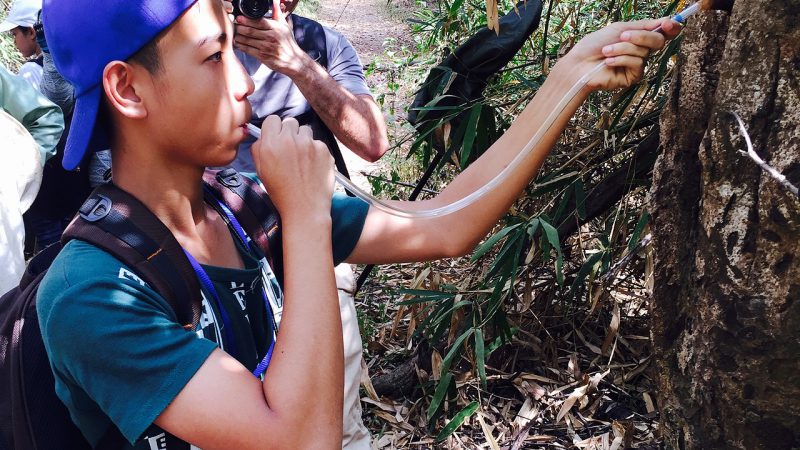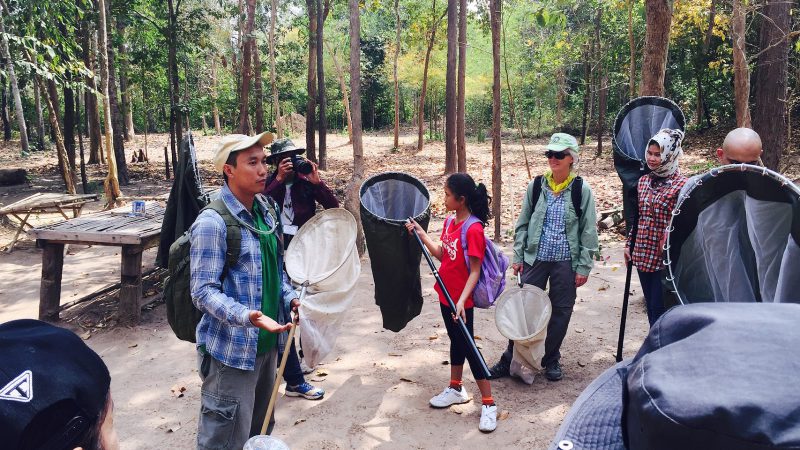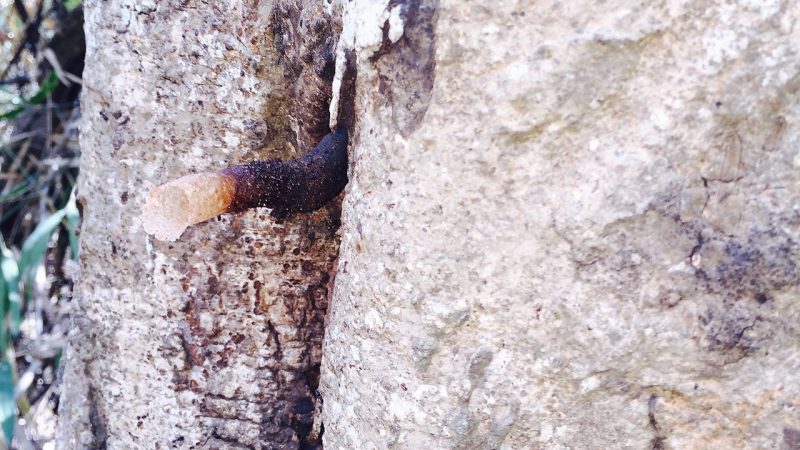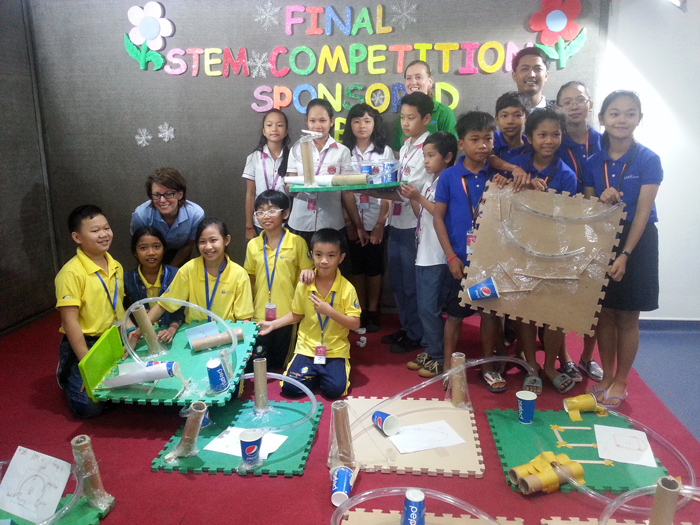This year is the year that I felt very proud of myself. I got involved in a project that could possibly change the whole country. It was the Project Evaluation exploration. In this exploration I and my team has to work to evaluate whether Project-based learning could be implemented in Cambodian public school or not. My team work with the other two teams which are STEM and the Project-based learning team. The two teams are working to introduce the learning method to public while my team is evaluating.It was challenging but no matter my team won’t give up. We’ve done a lot of interviewing and also collecting data. When we finished the evaluation, the result turn out very beautiful. The result shows that it is positive to implement Project-based learning method in Cambodia. Then the government would look at the evaluation result and decide whether they want to implement the learning method in public school. This exploration make me feel like I could change the whole country.The other exploration is the 3D Design In Public School exploration. This is also an exploration to change the learning curriculum. In this exploration I and my team are trying to implement 3D design into the public school. The reason we want to implement 3D design in the public school because the resource schools in Cambodia didn’t use the computer for any particular reason, the students are learning how to type.
Google science fair
Google science fair is a worldwide competition for kids under 18 to join all over the world. This year I decide to choose a project about xylem water filter. I found this method on the internet, I thought this method is interesting so I choose this method to work with. I use this method to test different tree species in Cambodia and find the tree branches. After all I didn’t find any though I had only test three common species but the interesting thing is I learn something new. One of the specie absorbed water in the xylem may be it be made into a sponge.
Project Evaluation
The project evaluation team works with the Project based learning and STEM exploration. Which these two exploration are introduction the new learning method to the Cambodian public school. Our team is a little different . We are evaluating, if it positive to implement these learning method into the public school. To evaluate we have three main criterion. They are relevancy applicability and result and outcome. In relevance we evaluate if it appropriate to do the project in the public school. In applicability we evaluate is the project feasible in every public schools, and last result and outcome. After we have criterion we make question to help us evaluate the criterion. Then we interview the students, teachers and the head-master in the school. After we get the data we fill it in the sheet and write some sentences about the data we get. Then when we got we data for both when before and after the project started. It turns out that the project is positive. Finally we present the result to the secretary of state.
Here are some photos of data collection:
Technovation
Technovation is a program which encourage girl to join coding. I join it this year. I was a new experience for me. Then I had a team of three girl, I wasn’t the coder, because I hadn’t taken any coding classes. I work on the business plan and my friend code using app inventor 2. We had twelve weeks to work then we’re preparing for the national pitch. National pitch is a really great opportunity. One team will we selected from the high-school student and one will be from the middle-school studen. My team was considered middle-school student to be in the semi-final. To be fair we have to lucky draw our presenting oder. Team got the number 1. We were nervous, especially we only have 4 minutes to present. I was so nervous on the stage. At last my team wasn’t chosen but my team still a another chance. All the team that didn’t win will be judged again and some team might make it to semi-final.
Insect conference
I and my partner, Mengthong was selected to join the insect conference at the royal university Phnom penh school. This conference is made to encourage Cambodia to research more about insect, because not a lot of people research about for one main reason is it is hard to research.
The conference last for three days but we only join for two days because it is almost time for holiday. On the first day of the conference we learn about insect, and we focus mainly on the order hymenoptera with bees and wasps. We also learn about taking picture of insect, and learn how to catch insect and also practice to catch insect. On the second day we and the university students went to Kampong spue to catch insect in the wild. It was so fun catching the insect especially I found a wasp potter’s nest. We also see a waterfall.
I had learned a lot from this conference, I even learn about how to distinguish between bees and wasps. I remembered three easiest way to distinguish between bees and wasps. One way that we can distinguish by looking at their legs bee had bigger and hairy legs which waps don’t. The other way is looking at their eyes, they both have eyes with shape of oval, but wasp have kind of a bend of v shape in the middle. Last but not least is their prothorax, wasps has kind of triangular shape on their prothorax which bees don’t.
Entrepreneurship
In the entrepreneurship exploration I and my friends are learning how to run a business. We had a plan to run a chilli sauce business. Our big goal in this exploration is to make a business plan that we can pitch to investors. Every day we would spend our time learning some vocabulary and concept about running a business. Some of the concept we learned are price segmentation which means to offer a similar product so you can make price level. Some words that I learn are fixed and variable cost, fixed cost means that it does not change based on how much you produce but variable cost does. In order to run a business takes a lot of work, so we had divided our groups into three small teams. The teams are marketing/advertising, recipe development and market research. I was in marketing/advertising. Every day my team have a quick meeting about what should we work on that is really helpful. Some of the works we’ve done are writing blog post, go round and let people taste our chilli sauce, and making an advertising video.
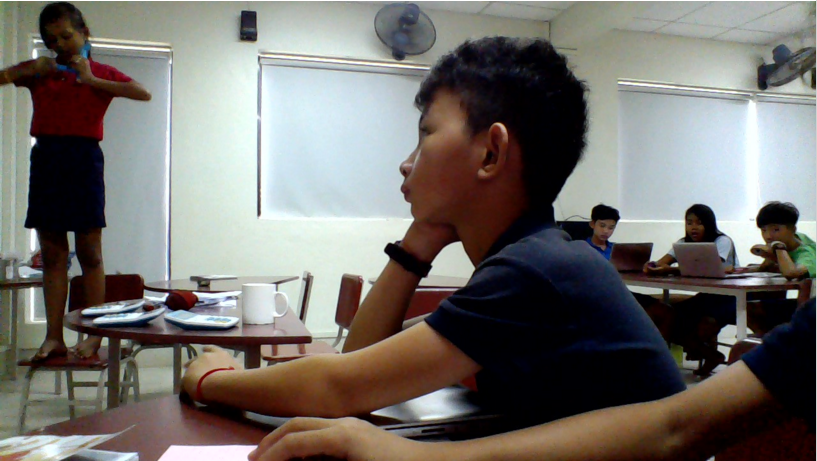
Literacy class
In literacy class I learn how to pronounce the English clearer, because it is not my first language. In order to improve I had had to read touge twist some article and record my voice then compare it with the native speakers. Also I had to write down the words that I had difficulty pronouncing it.
Here are the word that I have difficulty with:

Beside these I also read a limerick, then I had to try to make my own limerick.
Here are my limerick:
There is an animal called liger.
It comes from a lion and tiger.
Ligers don’t like to eat pork.
But they like to eat dog.
so they would spend their time eating a schnauzer.
There was a black and white cow.
she doesn’t like to eat grass some how.
maybe she is sick.
or she’d like to eat twigs.
she is a good cow, she makes milk for the whole house.
Bone research
In my learning time I had an hour to two hours a week to work on my independent discovery. My independent discovery is about learning about bone. To have an independent discovery I had to make a proposal. After seven weeks of researching, I had learn a lot. Here are some fact that I had learn:
Interesting bone fact
1. The axial skeleton has 80 bones.
2. The appendicular skeletal section has 126 bones.
3. The area of our body with the most bones is the hand, fingers and wrist where there are 54 bones.
4. Calcium is very important for our bones and helps keep them strong and healthy
5. X-ray machines let doctors see your bones. If you break your bone, it can grow together again if you keep it still. Somethime you might have to
wear cast so your bone can grow again.
6. Babies have soft bones. As they grow their bones grow stronger.
7. Skulls are made out out 22 bones.
8. Spines are made out of 33 bones.
9. Humerus is the largest bone in our arm.
10. The smallest bone in human body is the stapes bone in the middle of the ear.
What are bones made out of?

Bones are mostly made out of matric. Matrics are in part of the mitochondria. Toenail and fingernails are grow from matric. Bones form by the matric wrap around the cell. The main tissue in the bone is Osseous tissue or Bone tissue. Bone tissue from rigid that build up the skeleton. The bone tissue is hard and light.
How many groups of bone are there?
Humans born with about 270 bone. The bones in our body decreases when adulthood to 206 when bone are fused together. Bone are divided into two groups Axial and Appendicular skeletons. Axial skeleton is formed by vertebral column, rib cage and skull. Appendicular skeletons which is attached to Axial skeleton is formed by pectoral girdle, pelvic girdle and upper and lower limbs.
What are the bone functions?
Bones have six functions are support, protection, movement, stor ions, mineral, fat and endocrine regulation and produce red and white blood cell. Bones help to support our body without bones hunda can’t stand up, human will be like a protist and help to support our lung so it not collapse . Bones help with our movement with the muscle. They help protect our organs for example skull help to protect our brains and eyeballs and middle and inner ears. Bones are really important for us because they conduct vibration that allow us to hear. The bone marrow which is in the middle of the bone produce red and white blood cell. Fat acids are stored in yellow bone marrow to reserve energy when needed.Tissue in bones are capable to remove heavy metal other toxin from the blood to store away from the organ and slowly released from the body.
Here are the sources that I use to research:
https://en.wikipedia.org/wiki/Human_skeletonhttps://en.wikipedia.org/wiki/Bone\http://www.childrensuniversity.manchester.ac.uk/media/services/thechildrensuniversityofmanchester/flash/skeleton.swfhttp://www.childrensuniversity.manchester.ac.uk/media/services/thechildrensuniversityofmanchester/flash/skeleton.swf
https://en.wikipedia.org/wiki/Human_skeletonhttps://en.wikipedia.org/wiki/Bone\http://www.childrensuniversity.manchester.ac.uk/media/services/thechildrensuniversityofmanchester/flash/skeleton.swfhttp://www.childrensuniversity.manchester.ac.uk/media/services/thechildrensuniversityofmanchester/flash/skeleton.swf
https://en.wikipedia.org/wiki/Human_skeletonhttps://en.wikipedia.org/wiki/Bone\http://www.childrensuniversity.manchester.ac.uk/media/services/thechildrensuniversityofmanchester/flash/skeleton.swfhttp://www.childrensuniversity.manchester.ac.uk/media/services/thechildrensuniversityofmanchester/flash/skeleton.swf
https://en.wikipedia.org/wiki/Human_skeletonhttps://en.wikipedia.org/wiki/Bone\http://www.childrensuniversity.manchester.ac.uk/media/services/thechildrensuniversityofmanchester/flash/skeleton.swfhttp://www.childrensuniversity.manchester.ac.uk/media/services/thechildrensuniversityofmanchester/flash/skeleton.swf
http://kidshealth.org/kid/recipes/#cat20240
Stem Competition
On October, 22, 2015 five students (Seyha, David, Souyeth, Sopor and Sythong) and two teachers (Karen and Phearun) went to the STEM (Science Technology Engineering Math) for the final round. In the final round there are nine groups. For the first game the five members from were split up, to the student get to know each other with the hand-on game of human knot. For the second game the student return to their team to compete with the other team about the ‘‘ One Minute to Win It’’ game. There are five games. The games are use your body to bounce the balloon using your body except feets and hands, blowing balls into a box, balance cuts and plate over each other, knox the cup on the table ball using air from balloon and flip the spoon into many different container with different point.

The last part was about creativity. The challenge was to design the marble mover using plastic tub, paper, tape, cardboard tube, flat sticks and plastic cups but we can also use the tray that all the material came in it. The only rule is you can not touch the marble once the let it go and you have 25 minute. Almost all the team make their marble mover horizontally with the marble run through the tupe and came in plastic cup or tray and finish it in ten minutes. But Liger had not started building we were still disgusting what is our design. Then we all agree on building it like a maze. As we started building the staff, student and judges came around to watch us, because we were the only one who build it vertically. To this creativity we got bonus point and so Liger got the first place, the prize for the winner was $100 for Monument book.
